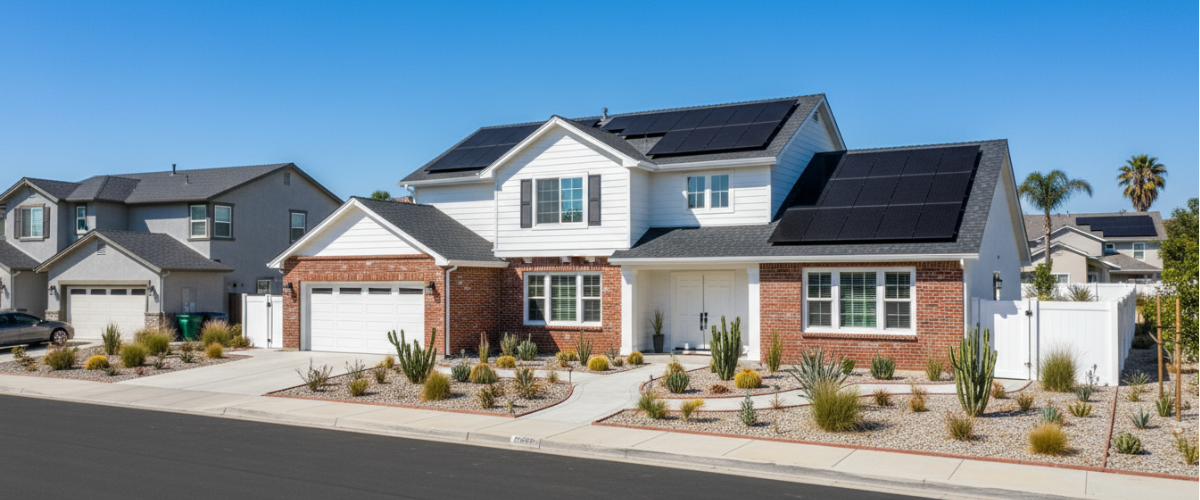What the 25D Federal Solar Tax Credit Means for Homeowners

Solar and Roofing Advisor
The federal 25D credit gives you 30% back on solar costs through 2025. Work with US Power for Qcells panels and factory-direct pricing.

The Residential Clean Energy Credit (Section 25D) gives homeowners a chance to save thousands on solar installations. It’s a federal tax credit worth 30% of the total system cost, covering not just panels but also labor, wiring, and installation.
That means if you spend $20,000 on a rooftop solar system, you could claim $6,000 back on your federal income taxes. If you also install solar battery storage — such as a Qcells-compatible battery with at least 3 kWh capacity — the same 30% credit applies to that portion too.
The best part? There’s no dollar limit. Whether your project is $15,000 or $50,000, you’ll still qualify for the full 30% on eligible expenses.
Why Acting Before December 31, 2025 Matters
The current 30% rate won’t last forever. After December 31, 2025, the federal credit is scheduled to drop to 26% and eventually phase out unless Congress renews it.
Here’s what that means in real numbers:
- Install in 2025 → $25,000 × 30% = $7,500 savings
- Install in 2026 → $25,000 × 26% = $6,500 savings
That’s a $1,000 difference just by missing the deadline.
Keep in mind: a solar project in California requires permits, site design, and utility approval, which can take 4–8 weeks or longer depending on your city and utility. Homeowners who wait until next summer risk missing the installation cutoff and losing thousands in savings.
California Electricity Costs Are Rising — Solar Offsets That
If you live in Los Angeles, Ventura, or the San Fernando Valley, you’ve seen electricity costs spike year after year. In fact, Southern California Edison and LADWP rates have risen more than 70% since 2013, with more increases expected through 2026.
Solar power directly offsets these rate hikes. When you install rooftop solar, you generate clean electricity from the sun instead of paying your utility’s premium prices. Pair that with a home battery, and you can store excess energy for use at night or during peak-rate hours — giving you greater independence from the grid.
How the Federal Credit Works
Here’s how it plays out for most homeowners:
- You install solar and/or battery storage through a certified installer like US Power.
- You keep all receipts and system documentation.
- When you file your taxes, you fill out IRS Form 5695 to claim the credit.
- If your credit exceeds your tax liability, the unused portion may roll forward to next year.
For example:
- System cost = $22,000
- Credit = $6,600
- Federal tax bill = $5,000
You can use $5,000 this year and carry forward $1,600 to next year (check with your tax advisor).
Why Choose US Power
US Power is a local Southern California solar installer with an exclusive partnership with Qcells, one of the world’s most trusted solar manufacturers. Unlike many national chains, we offer factory-direct pricing on U.S.-assembled solar panels and handle your project entirely in-house.
When you work with us, you get:
- American-made Qcells panels assembled in Georgia, designed for long-term reliability.
- High-efficiency black modules from Qcells’ Q.TRON BLK M-G2+ series, offering up to ~440 Wp output and ~22.5% efficiency.
- Expert installers who know the ins and outs of local permitting and interconnection with SCE, LADWP, and PG&E.
- Custom solar + battery designs for backup power and maximum NEM 3.0 savings.
- Transparent pricing with no subcontractors or hidden mark-ups.
Our goal is simple: make it easier and more affordable for California homeowners to go solar before incentives shrink.
Why Qcells Panels Are the Smart Choice for 2025
Qcells is one of the few manufacturers investing heavily in U.S. solar production — with new facilities in Dalton and Cartersville, Georgia producing both cells and modules domestically. This means better availability, stronger warranties, and fewer supply-chain delays for customers.
Qcells’ latest Q.ANTUM NEO TOPCon technology delivers exceptional performance in high-temperature environments — perfect for Southern California roofs. These panels maintain efficiency even on hot days, meaning more power output and faster payback.
Pairing your system with a Qcells battery gives you even greater control. During evening peak hours or grid outages, you can draw on your stored solar energy instead of relying on expensive grid power.
How to Make Sure You Qualify
To claim your 30% credit:
- Your solar system must be installed and activated before December 31, 2025.
- You must own the system (purchased outright or financed — not leased).
- The property must be located in the U.S. and serve as your primary or secondary residence.
- Keep detailed records of installation and equipment costs.
California Incentives Add Even More Savings
In addition to the federal credit, some California homeowners may qualify for additional programs such as:
- SGIP (Self-Generation Incentive Program): Offers rebates for battery installations, especially in high fire-risk areas.
- Net Energy Metering (NEM 3.0): Lets you earn bill credits for exporting excess solar power to the grid.
- Property Tax Exemption: The added value from your solar system is exempt from property tax reassessment in California.
Combining these with the federal incentive can reduce your payback period to as little as 4–6 years, depending on your home’s energy usage.
Your 30% Solar Credit Is Ending — Don’t Miss Out
For Southern California homeowners, this is a limited-time opportunity to take control of your energy bills, boost your property’s value, and cut your carbon footprint — all while saving up to 30% through the federal solar tax credit. It’s not coming back at this rate. Every month you wait means smaller savings and higher electric bills.
But remember: the 30% incentive ends December 31, 2025.
US Power, Southern California’s trusted solar installer and exclusive Qcells partner, helps you lock in factory-direct pricing on American-made, high-efficiency solar panels and batteries — before the deadline hits.
✅ Claim up to $6,000–$9,000 in tax savings
✅ Cut monthly utility bills by 60% or more
✅ Secure your installation slot before 2025 schedules fill up
Time is running out to claim your 30% federal incentive.
Book your FREE solar consultation now
Every week of delay means higher utility bills and less chance to install before the 30% credit expires. As the deadline approaches, demand for installations skyrockets — causing longer permit times and equipment backlogs.
Frequently Asked Questions
Artículos relacionados
Nuestros blogs relacionados
Learn strategies to finance solar and get the most savings on your investment.
Combat rising electricity costs with smart home solar solutions from US Power.
Calculate your real solar savings and reduce electricity bills through US Power.








Empoderamos a las comunidades y las empresas para que aprovechen las energías limpias y renovables energía solar soluciones que impulsan el crecimiento sostenible.
Derechos de autor © 2025 US POWER | Energía solar y techosUS Power - Axia by QCells. All Rights Reserved.
La privacidad es importante para nosotros, por lo que tiene la opción de deshabilitar ciertos tipos de almacenamiento que pueden no ser necesarios para el funcionamiento básico del sitio web. El bloqueo de categorías puede afectar a su experiencia en el sitio web.
Imprescindible
Estos elementos son necesarios para habilitar la funcionalidad básica del sitio web.
Personalización
Estos elementos permiten que el sitio web recuerde las elecciones que ha realizado (como el nombre de usuario, el idioma o la región en la que se encuentra) y proporcionan funciones mejoradas y más personales.
Mercadeo
Estos artículos se utilizan para ofrecer publicidad que sea más relevante para usted y sus intereses.
Analítica
Estos elementos ayudan al operador del sitio web a comprender cómo funciona su sitio web, cómo interactúan los visitantes con el sitio y si puede haber problemas técnicos.
Nosotros y nuestros socios externos utilizamos cookies y otras tecnologías para mejorar y rastrear su experiencia en este sitio, realizar análisis y personalizar el marketing para usted. Al usar el sitio, aceptas que usemos estas tecnologías, incluido el registro y el monitoreo de tus interacciones con el sitio.
¡Obtenga una estimación solar instantánea usando el satélite!










